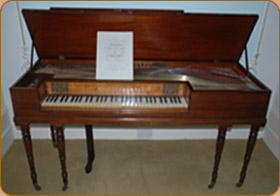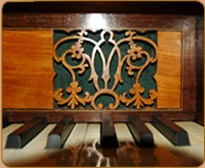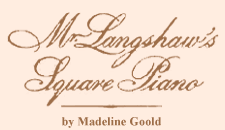Mr Langshaw's Square Piano

A clue inside a neglected square piano made in 1807, leads Madeline Goold on a quest to uncover the identities of the people who had owned and played it.
This biography of a now almost-forgotten instrument, which once held pride of place in drawing-rooms throughout Britain and its Empire, is a journey through two centuries of musical lives.
The author travels back in time and enters the musical world of Georgian England to meet the people who built and played the square piano that she found two hundred years later.
M.Clementi, Sonata Op.25, No. 5, First Movement (1790)

She discovers that the original owner was a north-country musician, struggling to make a living and educate his children in the early years of the Industrial Revolution; Mr. Langshaw's Square Piano - (ISBN 0954325591, Hardcover, Corvo Books, £13.99) traces the story of his square piano and sets it and Mr. Langshaw and his remarkable family, against the broader musical and social history of their time.
"It really carries the reader along and brings history alive. Great."
"…a tale that really draws the reader in…"
In his youth John Langshaw met and studied with some of the most celebrated musicians in Georgian London. He returned to his home town in the north of England with first-hand knowledge of the square piano, a new keyboard instrument that was taking the capital by storm, and he spent the next fifty years teaching music and distributing pianos on behalf of John Broadwood, the most successful English piano maker of the day.
Mr. Langshaw brought music to a part of the country where no one before him could even play Handel's Lessons, let alone teach them; in doing so he also brought the social change that accompanied the piano.
 Mr Langshaw's Square Piano
Mr Langshaw's Square Piano
Square Piano
Square pianos, sometimes called box or table pianos, are not square but oblong. They were the earliest pianos and for sixty years from the time of their first appearance in London in 1768 they dominated the piano market.
Small and elegant, they reflected the finest furniture of the period. They had little leather hammers that struck rather than plucked the strings as in so many other keyboard instrument of the time.
What was really novel was that they could be played soft and loud, piano e forte. The square piano became a link between the keyboard instruments of the eighteenth century and the modern piano and bridged the time when only the very wealthy could afford a keyboard instrument to the mass production of the mid-nineteenth century.




